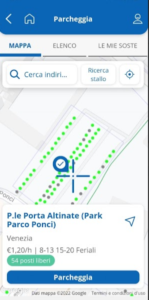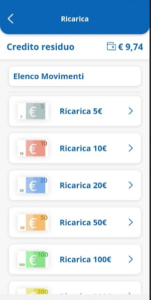AVM Venezia Official App
Images





Description
One such tool that is transforming the industry is the AVM app. Automated Valuation Model (AVM) technology, once accessible only to real estate professionals, is now readily available to anyone with a smartphone. But how exactly do these apps work, and why are they so important?
Let’s dive into the world of AVM apps and explore how they reshape how we evaluate properties.
What is an AVM App?
An AVM app is a digital tool that uses advanced algorithms and large datasets to estimate the value of a property. It pulls information from various sources, such as public property records, recent sales data, and market trends, to provide an instant valuation.
Unlike traditional appraisal methods, which require human input and can take days, an AVM app offers an almost immediate assessment of a property’s worth.
These apps are used by everyone from real estate agents to homeowners and investors, helping them make informed decisions based on current market conditions.
The Evolution of Real Estate Valuation
Traditionally, property valuation was a time-consuming and expensive process. Homeowners and buyers relied on professional appraisers to conduct thorough property evaluations. This involved physical inspections, comparison with nearby properties, and reviewing sales history, which could take days or weeks.
With the rise of digital technology, AVMs introduced a new, faster way to get property valuations. Now, with just a few taps on a mobile app, anyone can access accurate property value estimates, speeding up real estate transactions and making the process more transparent.
Key Features of an AVM App
Instant Property Valuation
One of the main selling points of AVM apps is their ability to deliver property valuations in seconds. By automating the process, users can quickly gauge the value of a home, whether they are a homeowner looking to sell or a buyer deciding on an offer.
Data-Driven Insights
AVM apps rely on big data to generate their estimates. These data sources include recent sales, property records, local market conditions, and even neighborhood features. By leveraging this data, AVM apps offer a comprehensive view of a property’s value, helping users make more informed decisions.
User-Friendly Interface
A well-designed AVM app is simple to use. Most apps feature an intuitive interface where users can input an address or select a property, and the app will instantly return a valuation. This ease of use for real estate agents and homebuyers makes AVM apps a valuable tool in the decision-making process.
How AVM Apps Benefit Real Estate Professionals
Faster Decision Making
For real estate professionals, time is money. AVM apps provide quick access to property valuations, allowing agents and brokers to make faster decisions and advise clients without waiting for a traditional appraisal. This can be especially helpful in competitive markets where speed is crucial.
Reducing Human Error
Manual appraisals can be prone to errors due to subjective judgments or incomplete data. AVM apps remove this uncertainty by relying on objective, data-driven models, reducing the potential for human mistakes.
Improving Client Relationships
In the fast-paced real estate world, providing timely information to clients can set agents apart from the competition. AVM apps allow agents to give clients an instant estimate of their home’s value, demonstrating their expertise and commitment to quick service.
AVM Apps for Homeowners
Understanding Market Trends
AVM apps aren’t just for professionals. Homeowners can use these apps to keep track of market trends and understand how their property’s value changes over time. With access to real-time data, they can decide when the best time to sell or refinance might be.
Easy Access to Property Value
Gone are the days when homeowners had to contact a real estate agent to get a rough idea of their home’s value. With an AVM app, they can check this information anytime, anywhere.
The Technology Behind AVM Apps
AI and Machine Learning
AVM apps use artificial intelligence (AI) and machine learning algorithms to analyze large datasets and continuously improve their predictions. These technologies enable the app to learn from new data and refine the accuracy of its estimates over time.
Big Data Analytics
AVM apps aggregate data from various sources, including public records, recent property sales, and neighbourhood statistics, to provide accurate valuations. The more data the app can access, its predictions will be better.
Pros and Cons of Using AVM Apps
Advantages of AVM Apps
- Time Efficiency: AVM apps can generate valuations instantly, making the process much quicker than traditional methods.
- Cost Savings: Many AVM apps are free or charge a small fee, making them much more affordable than hiring an appraiser.
- Transparency: Users can see the data behind the valuation, offering more transparency than a traditional appraisal.
Limitations of AVM Apps
- Inaccuracy for Unique Properties: AVM models may struggle with properties that have unique features or require special considerations, as they rely on general data trends.
- Lack of Human Insight: While AVM apps are data-driven, they lack the intuition and local market expertise that a human appraiser can provide.
AVM Apps vs. Traditional Valuation Methods
Cost Comparison
While AVM apps are often free or low-cost, traditional appraisals can be expensive, sometimes costing several hundred dollars. The cost savings for many homeowners and buyers make AVM apps an attractive alternative.
Accuracy and Reliability
While AVM apps are fast and convenient, traditional appraisals still have the upper hand when evaluating properties with unique features or in complex markets. However, for more straightforward properties, AVM apps can offer similar accuracy.
Popular AVM Apps in the Market
There are several AVM apps available, each offering slightly different features. Some popular ones include Zillow’s Zestimate, Redfin’s AVM, and CoreLogic’s RealAVM. Each app uses its proprietary algorithms and datasets, so users may notice slight variations in the estimates they provide.
How to Choose the Right AVM App
Consider the Data Sources
When selecting an AVM app, it’s important to consider where it pulls data. Apps that use more comprehensive and trusted sources will provide more accurate estimates.
User Experience and Interface
Choose an app with a user-friendly design that suits your needs. A good AVM app should be easy to navigate, especially if you’re not a real estate professional.
Legal and Ethical Considerations
Data Privacy Concerns
As with any app that uses sensitive data, AVM apps need to adhere to strict privacy standards. Users should check that the app complies with data protection regulations to ensure their personal information is safe.
Regulatory Compliance
AVM apps are subject to legal standards governing real estate valuations. Before relying on an app’s valuation, ensure it complies with local laws and regulations.
The Future of AVM Apps in Real Estate
AI Advancements
As AI technology evolves, AVM apps will likely become even more accurate. We can expect AVM models to incorporate more complex data points, refining their predictions shortly.
Integration with Smart Homes
The rise of smart home technology could provide AVM apps with even more data to analyze. For example, data from smart thermostats, security systems, and energy meters could offer insights into a home’s condition, helping to create even more precise valuations.
Challenges in AVM App Adoption
Trust in Automation
Despite their benefits, some consumers may be hesitant to trust AVM apps. The reliance on automation, without the involvement of a human appraiser, can be a hurdle for those who prefer a more personalized approach.
Market-Specific Limitations
AVM apps may work better in some markets than others. These apps might struggle to provide accurate estimates in areas with fewer sales or rapidly changing conditions.
Related apps
Download links
How to install AVM Venezia Official App APK?
1. Tap the downloaded AVM Venezia Official App APK file.
2. Touch install.
3. Follow the steps on the screen.














